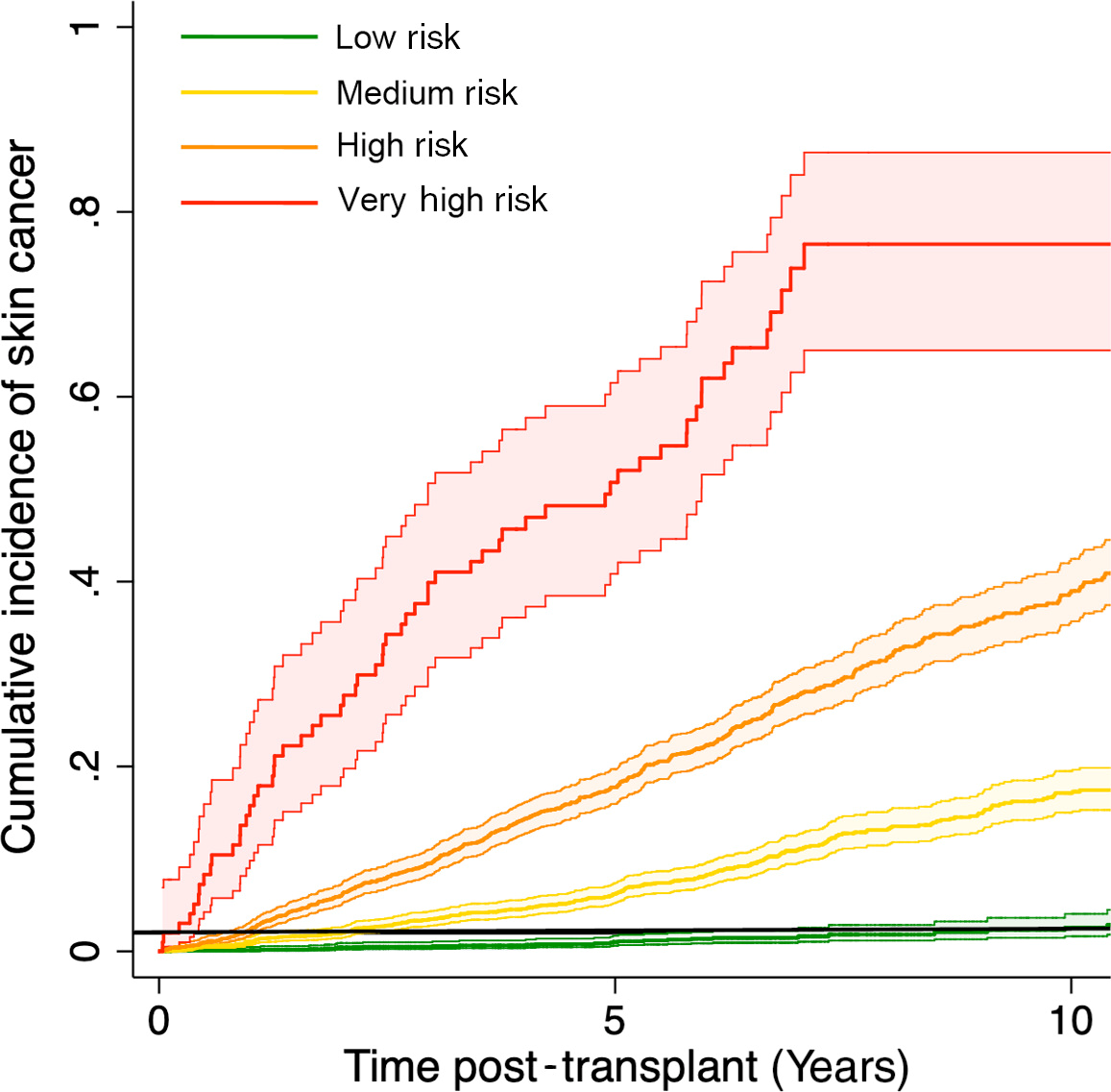Solid organ transplant recipients are at a significantly increased risk of developing skin cancer in comparison to the general population. Most transplant recipients will develop a limited number of skin cancers that can be easily treated, but a few recipients will develop hundreds of skin cancers which can become very difficult to treat and even life threatening. Read more about skin cancer.
Prevention of skin cancer is vital, beginning at the time of transplantation. Early detection of any skin cancer that might occur sometime after the transplant is also vital for the best care, treatment, and long term outcome. There is no exact determination of which transplant recipients will be severely affected with skin cancer. It is therefore important that all recipients are aware and adopt sun protective behaviors. Read more about skin cancer prevention.
Solid organ transplant recipients may also experience many non - cancerous changes in their skin. Such common concerns include: loss or gain of hair, acne, fungal infections of the skin and nails, viral infections of the skin such as warts and shingles, and many others. The information in this website is designed to provide transplant recipients with necessary knowledge regarding their special skin concerns, especially that of skin cancer. This is not a forum for diagnosis and treatment. Specific concerns that one might have regarding their skin should be addressed directly with a physician. Read more about skin infections or other skin conditions.
Find an ITSCC Transplant Dermatologist
Members of ITSCC collaborated with the Transplant Skin Cancer Network on research studies to determine the risk of skin cancer after solid organ transplantation. The research group developed SUNTRAC, the Skin and Ultraviolet Neoplasia Transplant Risk Assessment Calculator. This is a quick risk calculator for solid organ transplant recipients to show your average risk based on data collected from other transplant recipients. To calculate your personal 5-year and 10-year risk of skin cancer, take the quiz below or follow the link to download the free SUNTRAC app on your smartphone.
This app is designed for information purposes only, to complement the publication of the SUNTRAC tool. It is not meant to provide medical advice. There are other factors beyond those included in this tool that impact individual skin cancer risk and patients should discuss their personal risk with their own transplant team. If you have any worrisome skin lesions, contact your physician.
Please enter recipient characteristics.

Risk is
Screen within of transplant
Average 5-yr skin cancer risk: %
Average 10-yr skin cancer risk: %
REFERENCE
Jambusaria-Pahlajani A, Crow LD, Lowenstein S, Garrett GL, Melcher ML, Chan AW, Boscardin J, Arron ST. Predicting skin cancer in organ transplant recipients: Development of the SUNTRAC screening tool using data from a multi-center cohort study. Transpl Int. 2019;32(12):1259-1267. doi:10.1111/tri.13493
DISCLAIMER
Users should seek a doctor's advice in addition to using this tool and before making any medical decisions. The information provided in this tool is strictly the work of its authors and has no affiliation with any organization or institution.